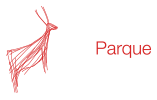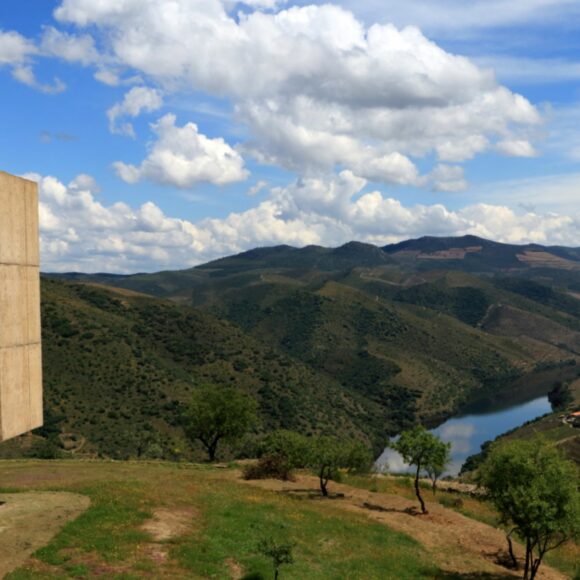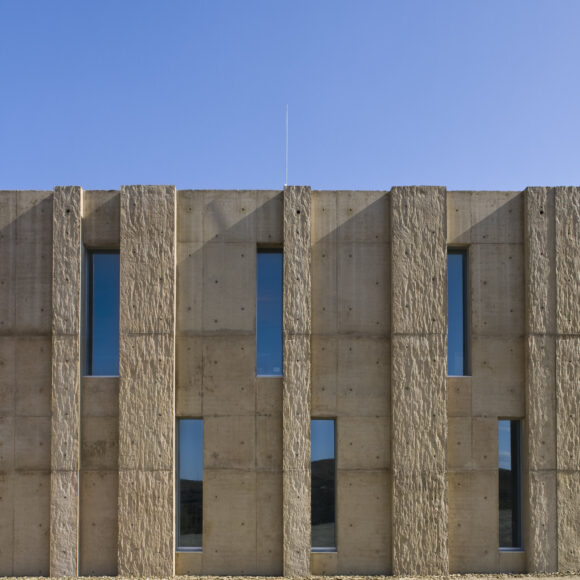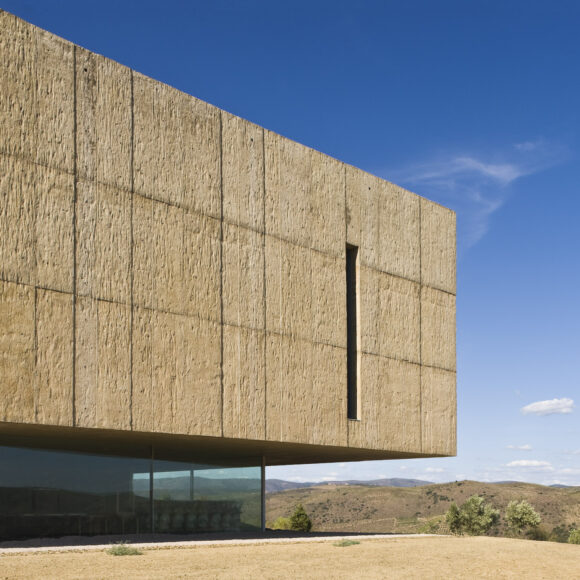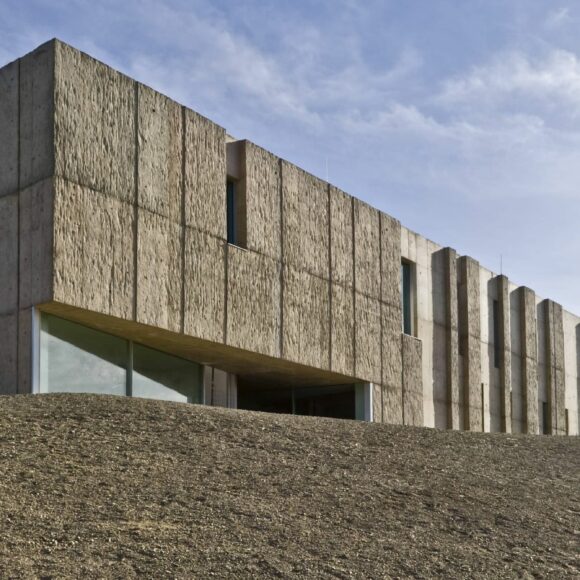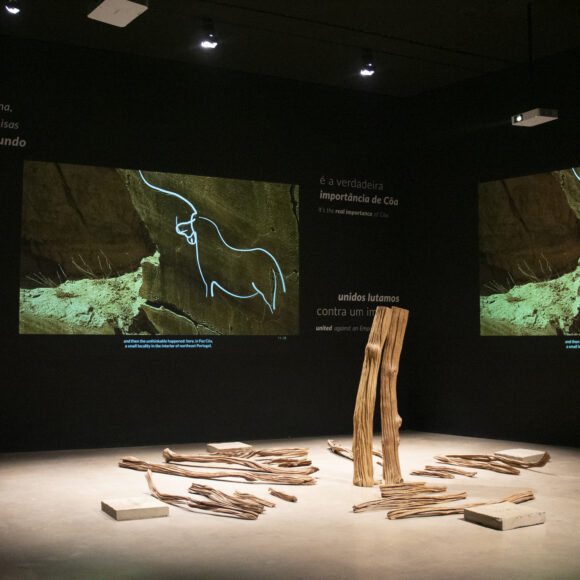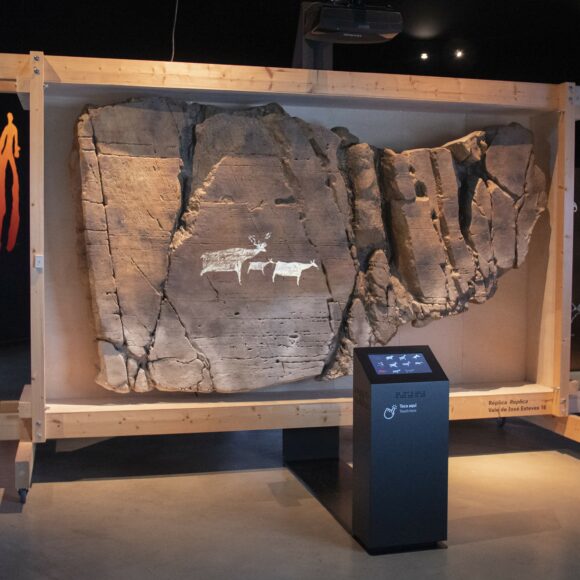Museum
The Côa
Côa
Museum
Inaugurated in 2010, the Côa Museum was designed by Camilo Rebelo and Tiago Pimentel, a team of architects from Porto. Its design departs from the notion that “Paleolithic art in the Côa Valley is perhaps the first manifestation of ‘Land art’“.
Being one of the largest Portuguese museums, it sits gracefully at the top of the mouth of the Côa River, celebrating the meeting of the two world heritage listings in the region: the Prehistoric Art of the Côa Valley and the Douro Wine Landscape.
If from afar the building resembles a large outcrop emerging from the soil, a closer inspection reinforces the perception, since the composition of the facade results from the use of mineral pigments in the composition of the concrete that was also object of surface treatment mimicking the natural irregularities of the metamorphic rocks in the region.
According to the preliminary draft of July 2005, the Museum’s “Unique assumption” is the perfect “integration in the surrounding scenery“, constituting its body, although as a “strong and affirmative gesture“, a “subtle mark, sensitive to the topography, slightly modifying the profile of the hill and in dialogue with the landscape“.
The Côa Museum does not replace the visit to the rock art sites in the Côa Valley Archaeological Park, after all the ‘true‘ Museum. It is the portal that will allow visitors to begin discovering the artistic richness of the Côa and Douro valleys.
The Museum is also a welcoming hub for researchers who wish to study the Côa by taking advantage of the largest library in Portugal dedicated to rock art. The Museum Educational Services develop their activity in a didactic fashion to welcome school audiences but also the general public.
